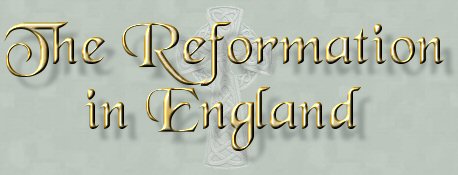| 

Edward died when he was only fifteen, and after an unsuccessful attempt by John Dudley, Duke of Northumberland to usurp the throne for his daughter-in-law, Lady Jane Grey, Henry VIII's eldest daughter, Mary, became Queen. Mary was a devoted Catholic, and from the outset of her reign, she was determined to restore the Catholic faith in England. This had been widely suspected, and it was this knowledge that was a large factor in Northumberland's schemes. The restoration of the Catholic faith also worried a significant proportion of the nobility. Many families had become wealthy as a result of the Reformation, having gained land from the dissolved monasteries, convents and friaries. The Protestant faith had also secularized certain aspects of local government, and the officials had no desire to lose their influence and prestige to the church. However, the majority of the common people were probably still Catholic, and there was by no means a lack of enthusiasm for the return of their old and familiar faith. Mary has been known in history as "Bloody Mary" because of her persecution of Protestants, but in 1553, persecution was not something she anticipated. Initially her reign was tolerant. Perhaps she believed that the people were longing so much for the return of her beloved faith that she would have no need to persecute, but time shattered her belief. Negotiations were immediately opened with the Holy See which resulted in the nomination of Reginald Pole as legate to reconcile the kingdom. Parliament met on October 5, 1553. It repealed the savage Treason Act of Northumberland's government, passed an act declaring the queen legitimate, another for the restitution of the Mass in Latin, though without penalties for non-conformity, and another for celibacy of the clergy. Mary replaced the Protestant clergy with Catholics, imprisoning prominent Protestants such as Cranmer, Latimer and Ridley. The Parliament of 1553 repealed most of the Protestant legislation of her brother, including the two Prayer books, Acts of Uniformity, the marriage of the clergy, and the Forty-two Articles. This did not occur without some dispute, and there was opposition over the government's attempt to punish those that refused to attend Catholic worship. Meanwhile the restoration of the old religion went on vigorously. The altars were set up again, the married clergy were deprived, High Mass was sung at St. Paul's, and new bishops were consecrated according to the ancient ritual. In Mary's second Parliament the title of supreme head was formally abrogated, and an attempt was made to re-enact the statutes against heresy, but was defeated by the resistance of the Lords. Some of this resistance undoubtedly came from the apprehension which prevailed that the complete re-establishment of Catholicism could only be effected at the price of the restitution of the abbey lands to the Church. When, however, the marriage of Mary and Philip had taken place, and the Holy See had given assurances that the impropriators of Church property would not be molested, Pole towards the end of November was at last allowed to make his way to London. On November 30 he pronounced the absolution of the kingdom over the king and queen and Parliament all kneeling before him. It was this same Parliament which in December1554 re-enacted the ancient statutes against heresy and repealed the enactments which had been made against Rome in the last two reigns. Anti-Lollards acts were passed in Parliament, and all acts against the Papacy made since 1529 were annulled. Mary hoped to restore the monasteries, convents and Friars, but this proved more difficult, and the government had to concede that the lands given out to the nobility during the years of change, remained theirs. Seminaries were established to train priests. Protestant books were replaced with Catholic ones, there was an attempt to restore statues and paintings in churches, as well as the altar and the great crucifixes that had also been removed, and the vestments worn by the clergy. All this seems to have excited much feeling among the more fanatical of the reformers, men who for some years had railed against the pope and denounced transubstantiation with impunity. Mary and her advisers started to enforce the penalties for heresy. Both under Henry VIII and Edward VI men had been burned for religion, and Protestant bishops like Cranmer, Latimer, and Ridley had had a principal hand in their burning. It seems to be generally admitted now that no vindictive thirst for blood prompted the deplorable severities which followed, but they have weighed heavily upon the memory of Mary, and it seems on the whole probable that in her conscientious but misguided zeal for the peace of the church, she was herself principally responsible for them. In 1555, the persecution of Protestants began. Those who refused to adhere to the Catholic form of worship were to be burnt to death as heretics. It was this above all else, even the Queen's marriage to Philip II, that made the first Tudor queen so unpopular. Mary appears to have been the driving force in the persecution, believing that the more people she burnt for heresy, the more favor she would receive from God. Mary desperately wanted a baby, and when she failed to have one, she saw this as a sign from God that she was being too tolerant of Protestantism, and the result was more burnings. Some of her advisors were aware of the damage her policy was causing her and her government, but Mary was persistent. Some three hundred people were burnt to death between 1555 and 1558. Most of the people were Londoners, but there were also burnings in Kent, Essex, Sussex and Suffolk. Cranmer, Latimer and Ridley were also burnt for heresy, and other lesser clergy. Many people were horrified, especially when a pregnant woman was burnt to death. In these years, Elizabeth became increasingly popular, and a poem was later dedicated to her: "When these with violence were burnt to death,
We prayed to God for our Elizabeth." Burning for heresy was a well established custom in the country; no one disputed it, and a small number of heretics were also burnt in Elizabeth's reign, but the objection under Mary was the definition of heresy. Protestantism had a strong following in the country, and it was accepted by many as a legitimate form of Christian worship, and not at all heretical. In less than four years 277 persons were burned to death. Some, like Cranmer, Latimer, and Ridley, were men of influence and high position, but the majority belonged to the lower orders. Mary and her advisers honestly believed themselves to be applying the only remedy left for the removal of a mortal disease from the body politic. PAGE GRAPHIX BY FOREVER AMBER |
 Free Forum Hosting
Free Forum Hosting